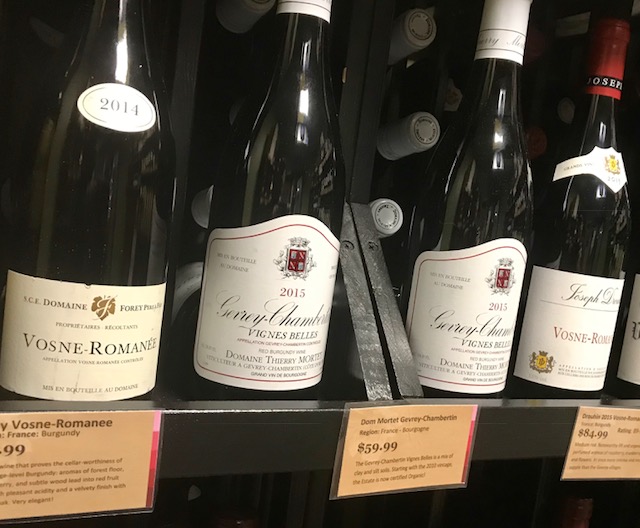EDITOR’S NOTE: While I did shut down my regular newspaper column a couplel of years ago, I have continued to write a quarterly magazine piece for a targeted circulation in East Central Indiana. The magazine has a quarantine on these for my publication but these posts tend to be non dated. This is from Spring 2021.
A good argument is assured when oenophiles engage in any discussion on alcohol levels in wine.
To some extent wine is viewed differently than other alcoholic beverages, mostly as something for dinner or relaxed enjoyment. The truth is much of the world’s favorite wine is high in alcohol. That makes those wines more of a health risk, particularly more of a risk as we age, and sometimes even difficult to drink.

Traditionally, French wines are somewhat lighter in alcohol content than American or Italian. Now for a quick bit of education, riper grapes create higher sugars and higher sugars create higher alcohol. What are two of the warmest and sunniest regions in the world? California’s coastal region and the hot expanse of Tuscany and northern Italy produce high alcohol wines.
A glossary would be helpful: Low alcohol wines (under 12.5%): Italian Prosecco, French Vouvray, California White Zin; Medium alcohol wines (12.5-13.5%): Champagne, most French whites, French Beaujolais and Burgundy, Spanish Rioja. High alcohol wines (13.5-14.5%): Many Chardonnays, Malbec, Shiraz, California Pinot Noir, Rhone Reds and Italian Barolo; Very high alcohol (more than 14.5%): California Petit Sirah and Zinfandel, some California Cabernet, Italian Amarone
That is not an all-inclusive list by any means but a good guide.
The drawbacks to high-alcohol wine should be obvious and you’ll find little disagreement from medical and health professional. Too much booze can lead to sleep deficiency, obesity, heart disease, fertility issues, and pancreatitis.
As an aging Hoosier I would add acid reflux, indigestion and low-grade headaches to the list. I became interested in this topic in the last six months when I started having adverse affects from higher alcohol red wine. And perhaps I should add I drink less wine now than in previous years. I’ve also heard similar complaints from older customers shopping in the wine store where I work part time.
I decided to do a little alcohol survey in that shop. Let me clarify it is more of a boutique wine shop with value wines but a bigger selection of premium wines than any liquor store or grocery aisle. The wines I looked at, French and American, range from $50-$350 a bottle. But price has nothing to do with alcohol levels it was just a good test group. I chose a set of shelves with 24 random wines from Bordeaux and another with 24 bottles from California, mostly Napa.
The results are interesting to serious wine drinkers. Of the 24 Bordeaux wines, none were higher than 14.5 percent but there were 10 right at that mark. Half of the wines were 14 percent or lower with 10 of those in the 13 range.
How many people buy wine based on alcohol? The answer is very few but it’s starting to creep into the conversation. It’s also a bit of a national conversation usually centered around California and Australian reds.
How do you know the alcohol content in your wine? That’s really easy. The alcohol level in any bottle of wine sold in the USA must have the alcohol content on the label. Some wine makers make it tough to find but you’ll come across it on the bottom corner of the front label or buried in a bunch of small type on the back label.
There is also plenty of controversy about how accurate those measurements are, especially from California. Oddly enough, California liquor laws allow a 1.5% variance on wine below 14% and a 1% leeway for over 14%.
So an easy solution is to buy French wine, right? That is what I’ve elected to do in future purchases. But, for enjoyment purposes if you want a big, hot Napa Cab just have a glass of water near by and sip it alternatively with the wine. The simple glass of water is a solid solution that works and doesn’t dilute the enjoyment of a hefty red wine.
The point is not to drink more of one wine or less of another. The goal is to educate yourself and know what you are drinking. The risks are significant to heavy and moderate drinkers.
Enjoy your big red wines but be sure to mix in some whites and lighter reds for your health. And, always drink in moderation.

Hi, Howard:
Just a fast note to point out that some years ago I researched how the US government ascertains accurate alcohol levels on wines and learned that for any wine above 14.04% (14% for all practical reasons) there is no testing for accuracy of any sort. And even if a 14%+ wine were to be tested and found to have more than the legally allowable 1% leeway, one lab person there’s NO PENALTY WHATEVER for being out of compliance. I wrote a column about this, and was later told by a winemaker that most winemakers know this! No fear of retribution leads to chicanery. About a decade ago, a winemaker friend staged a tasting of seven very expensive Cabernet Sauvignons, (actually six and one Meritage). All labels were listed as 14.somerthing% alc. He then did analysis on their alcohol levels. All seven tested out at 16.9% or above, most of them in the mid-17s. So though I commend your column here, the cynic in me sees a more complete picture.